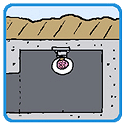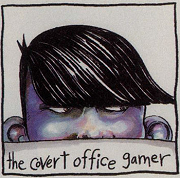|
Yeah, I think that deploying a tear gas pen would require you to be wearing a gas mask, which would sort of giveaway your plan and make the subterfuge of hiding it in a pen rather ineffective, yes? Your great grandad probably had awesome stories though.
|
|
|
|

|
| # ? May 9, 2024 23:51 |
|
Sadly he died when my dad was quite young and my grandmother mostly just complained about his constant smoking. Thinking about him though I started flipping through some of his Congressional testimony and at one point he describes shooting a machine gun in the basement of (the original?) Abercrombie & Fitch in New York, and apparently his business sold a product called "Chlorocold," for "treating colds with chlorine gas" 
|
|
|
|
Tias posted:Also, his diary confirms that he took an infantile glee in insulting and obstructing the Chinese. It seems like the only possible explanation that he wasn't removed that people either didn't know or didn't care what a colossal rear end in a top hat he was. There may not have been a better option given the choices at the time. Stillwell wasn't the first pick to go to China, the first pick was a three star general named Hugh Aloysius Drum, best known at the time for losing out to George Marshall in filling the Chief of Staff slot and for sinking his career when he was caught on day one of a wargame (Carolina Maneuvers) in 1941 by George Patton. Drum thought he might get the command of American forces in the European theater but when he came to DC to get what he thought were the marching orders to fame and glory, he instead was offered the China mission. The number two choice was Joe Stilwell, "Vinegar Joe" Stillwell. George Marshall knew exactly the sort of man he was sending to China.
|
|
|
|
MANime in the sheets posted:Yeah, I think that deploying a tear gas pen would require you to be wearing a gas mask, which would sort of giveaway your plan and make the subterfuge of hiding it in a pen rather ineffective, yes? Not any more than a mace spray requires you to. I don't know how the pen works, but I'm guessing it just squirts a small amount of gas directly into your attackers face, you wouldn't be exposed for long enough to react adversely, I think. bedpan posted:The number two choice was Joe Stilwell, "Vinegar Joe" Stillwell. George Marshall knew exactly the sort of man he was sending to China. Well, poo poo. Man was a an utter tool 
|
|
|
|
Greatbacon posted:At least until Tony Benn starts speaking, at which point he perks right up. He noticed senpai.
|
|
|
|
Previous posts. Part 1: Historical context Part 2: The Armies, the Objectives and the beginning. Part 3: The Initial year - Saddams assault. Iraq is driven out of Iran, 81-82. We take our next step into the quickly developing farce that is the Iran Iraq war with a look at how the events in the south shaped the Iranian power structure to the current day and really cemented the revolution into being classed as an Islamic one. We will also start to look at how Israeli actions in Jordan would start to have an impact on the war as well as their direct influences on the theatre of war itself. However first we will look at the state of play at the start of 1981. State of the front. In general, I will be talking much more about the southern front than any of the other fronts, that’s not because the other fronts were unimportant, they most certainly were important but due to the terrain they were much more static. Mountains and narrow passes do not lend themselves to manoeuvre warfare and there are only so many times that I can say the Iranians broke through onto the plains east of Baghdad and were stopped in their tracks by Iraqi Armor. I will still note major events but I won’t be returning there as often as the south.  The problem that Iraq had is that they held a fair bit of territory, but they had not really captured anything important. You can see that their offensive has stalled outside Susangerd, Dezful, Ahvaz and Abadan and they have not taken the mountain pass south of Khorramabad. They got side-tracked by trying to take cities rather than starving them out which wasted their strategic surprise and allowed the Iranians to reinforce. Then they decided to hunker down and wait for the Iranians to attack them, failing to grasp that nobody has ever won a modern war by sitting down and waiting for the enemy to attack them. Saddam had also failed to cut Iran off from Khuzestans oil.  As you can see the majority of Iran’s oil lay along the border with Iraq, but the major terminal and oil pipelines were in Ahvaz, so Iran remained able to export oil in significant quantities and keep its economy ticking. Significant damage was inflicted on the border facilities as the many photographs of burning oil terminals in my last post show, but they had not really inflicted enough damage for Iran to notice. They had slack capacity in their oil system and most of their export was done via sea in the Persian gulf, it would be 3 years at least before Iraq would be able to do anything about that. So they waited, patiently, for the Iranians to recognise Iraqi superiority and surrender. Iraqi battlefield intelligence was not doing their job of telling Saddam that Iran was still dangerous. They did not tell him of the tenuous nature of the Iraqi front lines, where Iran was able to freely manoeuvre around the outsides and attack at a point of their choosing because they had failed to cut Iranian roads. However Saddam did recognise that the war might stretch on and so began mass call ups and purchasing of weapons. This would create a problem in that as the size of the Iraqi army ballooned there would actually be very few people who had experience of command at any level available to command the new formations. Iraq suffered heavily in its experienced NCO and lower level officer ranks in the bloody fighting of the first year, and didn’t have enough to replace those losses let alone to create whole new formations. Saddam would note his worry at the loss of Iraq’s “courageous and experienced men”: “The losses should be divided so that the less courageous must have a share in them,” and on the point of casualties in general, “Kindly brief your formations on the necessity of concentrating on organizing defences in a manner that guarantees the lowest casualties possible.” This was a recognition of part of the problem, Iran had more men and so Iraq needed to preserve its own, which is a logical and necessary recognition on the part of Saddam. However he did not recognise the bigger problem that the positions his men occupied would by necessity result in heavy casualties because they did not take advantage of geography and essentially his men would die to hold essentially worthless ground. It is also worth noting that at this stage the marsh and flatland areas were subject to the winter floods which greatly limited Iraqi armours mobility. They didn’t have much of a choice but to stop advancing in December. The big problem that Iraq would have is one I alluded to earlier, lots of their line was filled by formations of the Iraqi People’s Army, who were less well trained and equipped than the regulars and who even Iraq recognised should not be employed in front line combat. However the problems of war took over and they ended up being used for duties that they were not trained to perform. Iran’s state of affairs. The US embassy hostage crisis was resolved in 1981, the whole catastrophe with that is interesting in of itself but separate, essentially it was a spontaneous act by Iranian students but was co-opted by Khomeini and dragged on for far longer than it was originally planned too. However the important part of this was as part of the deal to release the hostages Iran received significant amounts of spares and ammunition for its American weapons. Also the arms embargo placed on Iran from parts of Western Europe ended and weapons from North Korea, China, Libya, Syria and European arms dealers would pour in to Iran. We will also see the start of the eventual American sale of arms to Iran this year with discussions in the government that they should support Iran to stop it going soviet, however the US would push diplomatically to limit arms sales to Iran for some time to come.  President Bani-Sadr However that is all to come, at the moment there was a struggle going on in the Iranian government between the clerical and non-clerical factions. President Bani Sadr was part of the non-clerical factions and he was under extreme pressure from the clergy to attack. The clerical faction included the Pasadaran and Basij militias. Bani-Sadr had been a close advisor to Khomeini and evidently held his trust as he ascended to the presidency upon the Ayatollahs return from France. Internal politics would be his downfall, the clerics would murmur treason at his inactivity and perhaps panicking he ordered the first counter attack to bolster his position. Iran’s army was not ready for this and it would fail badly. The failure of this would lead to the impeachment of Bani-Sadr and his removal from power allegedly for plotting against the clergy, several of his allies were executed and all political parties were outlawed except for the Islamic Republic party. Mass arrests of other political parties would follow including the Tudeh (communist) party and the various other major parties of the revolution. Bani-Sadr was protected by the Peoples Mujahedin and smuggled out to France aboard an air force transport where he survives to this day. On a side note I am very surprised that he was not assassinated, as many Iranian exiles were, by the Quds force who would act as the hit squads of the regime throughout the war and would create Hezbollah and other terrorist groups. Evidently France took protecting him very seriously. However the Islamists hold on power was now complete, they would have issues with unrest and attacks from the parties they outlawed, but this is what I referenced when I said that the Invasion cemented the revolution as an Islamic one. It united the people behind Khomeini and the events of the early war allowed the scapegoating of other factions within Iran and let the clerics consolidate. As a result of Bani-Sadrs flight the Iranian air force was grounded for two months and interrogated. A committee of mullahs were appointed to supervise all flights and aircraft were only given enough fuel for their planned missions and training flights were curtailed. Had Iraq’s air force been competent and not dispersed to survive then this would have been a golden opportunity that could have cost Iran dearly. The First Iranian counter attack. This would really exemplify two things, the first was the fact that the Iranian regular military was not really able to fight much better than Iraq’s. They were subject to similar political constraints that forced them into battles they did not want to fight and paid for it heavily. The second is we start to see the emergence of the successful form of Iranian warfare, in the centre Iran would start to employ light infantry and attrition tactics to much more success than they did in the south. The southern attack.  Iranian plan of attack Iran would counterattack in January 1981 focused around Susangard, it would also attack in other areas, notably Mehran in the north of Iraqi held territory and directly at the salient at Ahvaz. They would also attack at Qasr-e Shirin in the central mountainous area which held the major mountainous pass for the road that leads into Baghdad from the north east. The plan as it stood was to attack the Iraqi armoured forces surrounding Susangard, drive behind the Iraqi positions at Ahvaz straight down to Khorramshahr, cutting off and destroying the front line forces further into Iran. The general idea is shown in the image above with the blue arrow. The problems with this should be fairly obvious, I have already mentioned the wet terrain due to the winter rains and the natural defences of the area. They would run into the exact same problems that the Iraqi Armor did when trying to deal with the irrigated plains of western Iran. Enacting a plan that relies on the fast movement of armoured forces in the rainy season was just begging for catastrophe. This also does show that while I will give the clerics a hard time for their poor military decisions, the politicians were no good either and provides another example of why attacking for political reasons is a poor idea.  The penetration to Hoveyzeh. The majority of Iran’s operational armour was committed to this attack along with the Iranian parachute brigade to fight inside the cities. However Iraqi signals intelligence had intercepted so much radio traffic due to sloppy Iranian communications discipline that they knew what was coming and managed to concentrate their best armoured divisions in the area. Also early in the battle they would capture the Iranian plans from a wrecked vehicle of the Iranian 92nd division. Iran would achieve breakthroughs against Iraqi lines with their tanks rolling into Iraqi command posts in a manner somewhat reminiscent of the first Soviet counteroffensives at Kharkov in 1942. However they quickly lost momentum as the Iraqi corps commander smoothly shifted forces around to counter the Iranian breakthroughs. They were not helped by being bogged down in the heavy rains with tanks from both side becoming stranded in the mud and fighting being confined to the roads. They managed to reach the town of Hoveyzeh to the south west of Susangard but they found themselves surrounded on 3 sides by Iraqi forces and taking heavy casualties as Iraq counterattacked. The army tried to reinforce but only succeeded in throwing away more tanks. They went into the fight with 300 tanks and lost 200 of them in comparison to Iraqi losses of around 150, they often outfought their Iraqi opponents at close range but it didn’t help them in the end and the offensive in the south ended in failure. The central attack. We will see in this battle the start of Iranian light infantry tactics which gained Iran its only real success of this offensive. In the centre at Qasr-e Shirin we would see Iranian light infantry from the Pasadaran infiltrate at night and take ridges and heights which lead to significant gains in that area. However in the south they were employed mainly in human wave attacks which would unnerve and rout the Iraqi defenders in several areas. The fact that the only real success came from the Pasadaran also lead to the growing of Pasadaran influence and that of their patrons in the clergy at the expense of Bani-Sadr and the regular army. The army had counselled against frontal attacks of this nature but the fact that the Pasadaran did it anyway and it worked only further undermined them and meant that this new form of so called “Islamic warfare” espoused by the revolutionary guard would become the norm in many places. Despite the brutality of the human wave attacks especially in the early days where the more “expendable” members (in this context read teenagers and old men) were sent in to breach minefields and minefields and probe Iraqi defences it would work in these early days. Iraq had the problem that they didn’t really have the mass of infantry units necessary to fight in the mountainous areas of the centre, they tried to rely on heavy concentrations of armour to amplify their manpower disadvantage but in hilly terrain this just was not tenable. Iranians used TOW missiles to great effect attacking the road bound Iraqi armour from elevated positions and inflicted heavy losses. Iran just kept pricking at Iraq here, it was described as a series of small local battles which wore at Iraqi morale and material heavily. They did not achieve significant territorial gains in the centre but they certainly inflicted heavier losses than they took. Consequences and lessons for Iraq. Iraq would learn a fair few things from this, not all of them true or helpful. The first was that the 9th division who had been holding the original positions around Susangard could not be relied upon, they had retreated in disarray from the Iranian attacks. Saddam would comment that if the soldiers had stood firm for a few minutes and fought rather than panicking before withdrawing then the fight would have gone much differently. This was a fair point and indicated that Iraq really didn’t know how to conduct a withdrawal where you at the very basic level have half your guys stay and fight while the other half withdraws and then leapfrog backwards, but panic had gripped a lot of their forces and they had just run. Saddam would also make the rather prescient comment that the wide employment of the tactics employed in the central area would result in them being able to crush Iraqi units piecemeal, skirmishing tactics of this nature greatly suited Iran with its lightly equipped fighters that could disappear by the time Iraq could roll up its heavy equipment. This would be proven all too well as the war progressed.  It is also at this juncture that chemical warfare is discussed by Iraq, Saddam started to discuss the use of soviet Luna or FROG missiles tipped with chemical warheads against enemy troop concentrations. This would soon balloon into the war of the cities where Iran and Iraq would trade free flight rockets freely at each other’s cities with tear gas and mustard gas being employed against Iranian offensives starting in 1982. This was also the point that Saddam realised that he needed supplies, Russia had cut off arms shipments in October 1980 because Saddam had not deigned to consult them before invading and also because they secretly believed Tudeh might win out in Iran and had a dim view of Saddams treatment of the Iraqi communist party. Iraq entered the war with stockpiles of ammunition for their 122mm howitzers of around 83’000 shells, during the siege of Abadan they fired 40’000 rounds. In 1981 the stockpiles of artillery ammunition in particular were at crisis point for Iraq and Iran. Iraq would buy TOW missile equipment from the Saudi and Jordanian governments to use captured Iranian equipment. Tariq Aziz would be dispatched to Moscow to attempt to buy arms in late 1980 and would be rebuffed. So Saddam was forced to seek other sources, they approached Yugoslavia, Czechoslovakia, Egypt, Somalia and Greece and bought everything they could find, the situation was desperate enough that they were buying quantities as low as 8’000 shells from the Yugoslavs for their artillery just to try and keep fighting. However with ammunition consumptions often exceeding 1’000 rounds a day this was obviously not a long term solution. Iraq would also start taking out loans, falling oil prices would hurt their finances and they sought a $2 billion loan from Kuwait to repair their infrastructure damaged by Iranian shelling. This would be the start of many loans, for which the accumulated debt would be a huge influencing factor in Iraq’s invasion of Kuwait in 1990. Iran. The major consequences of this offensive for Iran were political and was discussed previously, it was also the case that the Pasadaran would now no longer be commanded by the Army in battlefield operations as they had been in the south. This would provide a stumbling block for some time until they would learn to cooperate fully as equals later into the war. Unfortunately access to Iranian archives about the war is a lot less open than Iraq’s, so I can give much less detail on the back end of Iranian planning as I can on Iraq’s. However their armed forces were not ignorant of the lessons of the offensive and would incorporate them into their next attack. September of 1981 would be the date of that attack but first there are two matters that need addressing. The first was the attempt of the Organisation of the Islamic Conference (OIC) to broker peace, the second was the Israeli strike of the Osirak nuclear reactor, Operation Babylon. The first attempt at peace. A conference was held in Mecca which was attended by the foreign ministers of the OIC’s 47 member nations to attempt to broker a peace deal between Iran and Iraq. Iraqs position was that they should broker an immediate ceasefire between the two sides, which was rejected by Iran. With the problems of Iraqi aggression, Iranian intransigence and the fact that the conflict was publically portrayed as a struggle between pan-Arabism and pan-Islamism when in reality almost none of the members of the OIC wanted to be seen to support either side of that ideological divide meant that nothing came of it. Indeed Iran would take Iraq’s eagerness for a ceasefire as a sign of weakness and it would redouble their resistance. With the failure of the OIC to broker a peace Saddam tried a show of strength and attacked Susangard again, however this was poorly planned and Iran had taken a considerable amount of time reinforcing and preparing the city with elite troops and the Iraqi attack was repulsed and Iran reclaimed a significant amount of the high ground around the city shortly afterwards. Operation Babylon.  Iran had already bombed the Osirak plant causing minor damage early in the war, but Israel would now enter the stage to finish the job. Iraq’s constant hostility to Israel that has been covered extensively already, involvement in the 1973 war and Iraqi obstruction of the International Atomic Energy Agency (IAEA) from investigating Osirak meant that Israel was all too aware that Saddam was planning to build a nuke and they were certainly to be the target, they had acquired their own nuclear weapons and had no intention of allowing Iraq to level the playing field. Iraq had publically announced in the aftermath of the Iranian raid that the reactor was “only for use against the Zionist enemy”. Which sent the message loud and clear to Tel Aviv. On June the 7th 1981, Israel sent a force of 8 F-16’s and 6 F-15’s to destroy the reactor, they caught the Iraqi defence forces with the AA crews on dinner break and the defensive air patrols landing to refuel. It is almost certain that in order to obtain such perfect timing Israel had direct intelligence regarding Iraqi defences. Saddam blamed Iranian collusion in the attack and accused them of colluding with the Zionist enemy, this was almost certainly just Saddams paranoia breaking through. Iraq would try to seek redress through the UN but nobody was buying that they were using the reactor for peaceful purposes and so that got them nowhere. Iranian unrest and internal strife. While the Islamists had seized power, the various other groups were not going to go down without a fight, the People’s Mujahidin were particularly active in terrorists bombing campaigns. There would be several major bombings, the most significant of which was the destruction of Khomeini’s political party HQ, which killed the party leader, Ayatollah Behestri, fourteen ministers and twenty seven deuty ministers. There would be over a thousand assassinations of clerics, ministers and judges including the Chief Justice and Prosecutor General during the month of June, and in August they would successfully assassinate the President and the Prime Minister. However the regime would strike back hard, executing nearly 6000 terrorists and suspected terrorists, and the violence would spill out onto the streets in open conflict between the People’s Mujahidin and the army and Pasadaran in which the Mujahidin came off the worse. The heavy casualties they took would weaken them significantly and with the improving fortunes of Iran in the war towards the end of 1981 they were finally substantially quelled. Planning and execution of the September offensives. Iran had been skirmishing along the Iraqi front lines for several months this was important for several reasons, they became very familiar with how Iraq had chosen to dig in, they largely followed textbook soviet doctrine very much by the book, Iranian combat engineers got first hand looks at captured earthworks, minefields and anti-tank obstacles. This meant that they were able to at the end of September launch a significant attack, named Operation Eighth Imam (Samen al-Ae’mmeh) after a Shia Imam who was martyred in the 8th century. This attack targeted the Iraqi salient near Abadan, a regular division the 77th infantry and a division sized force of Pasadaran crossed the Kharkheh river north of Ahvaz and caused the 3rd Iraqi division to collapse, they broke and ran abandoning huge quantities of equipment as they had to flee across a single pontoon bridge. Iranian reports claim 200 armoured vehicles destroyed, 160 tanks captured and five artillery pieces. What is deeply depressing about this all is Iraqi intelligence correctly predicted every one of these attacks but no remedial action was taken by frontline forces which lead to the scale of the defeat.  This significant success boosted Iranian morale and lead to a series of attack between November 1981 and May 1982 where they took steps to drive Iraq from their country. The next offensive was called Operation Jerusalem Way (Tariq al-Qods) and was aimed at recapturing the town of Bostan. They had tried before in august but were stopped by Iraqi fortifications, but this time they planned extensively and employed massed human wave assaults that overwhelmed the Iraqi positions. They had built a road through terrain Iraq had assumed was impenetrable to support this offensive and when they attacked on the 19th of November the Iraqi forces collapsed and Bostan fell in very short order. Iran claimed to have captured ninety armoured vehicles and equipment for two battalions of artillery. They took from the success of these offensives that they couldn’t compete with Iraq in armoured vehicles and so they would focus their tactics on artillery and infantry attacks, they would take losses but Iran had the manpower to absorb it that Iraq just did not have. General Iranian tactics from this point onwards can be broken down fairly simply. Reconnaissance by the elite forces of Iraqi position would detect the areas of the line held by poor quality troops, usually those of the Popular Army. Iran would then mass infantry and artillery infront of those points and fall like a sledgehammer on the Iraqis, causing them to break and run and leaving the positions of the regular Iraqi army untenable. Due to Saddams constant interference from Baghdad and the threat of execution commanders were unwilling to show initiative and were slow to respond. Saddam had also ordered them to hold all territory unless they were ordered to fall back, stopping Iraq from mounting any kind of mobile defence. This would bite Iraq hard over the coming months. They would make extensive use of diversionary attacks which spread what Iraqi mobile reserves there were too thin to make an effective difference.  The largest defeat Iraq was to suffer in these offensives was as a result of Operation Undeniable Victort (Fath al-mobin) where they attacked the Iraqi salient outside Dezful, they attacked from both sides of the salient and pushed through the town of Shush and cut off the entrenched Iraqi positions near Dezful. 100’000 Iranians would take part in this attack that started with infiltration into the Iraqi lines of the 4th Corps, the commander panicked and fled his post leaving counterattacks to be carried out in an uncoordinated and piecemeal manner. The shambolic Iraqi response was a large part of why this offensive resulted in Iran taking 15’000 Iraqi prisoners and capturing huge quantities of equipment, the Pasadaran would organise an armoured unit from this captured equipment. After the success of these two offensives Iran had recaptured the vast majority of territory lost to Iraq in the south, only two problems remained, Khorramshahr in the south and Ahvaz in the centre. They received significant technical help from North Korean combat engineers with associated bridging equipment in preparing this assault. The Operation was named Jerusalem (Bait al-Moqaddas) and it aimed to remove the Iraqis from the thin sliver of land they occupied in Iran which consisted of a wedge leading back from Khorramshahr to the Iraqi border. Iran launched a complex operation where they feinted at cutting the Baghdad-Basra highway to draw off armoured reserves and then infiltrated Iraqi lines and conducted nuisance raids for the week preceding the main assault. On the 2nd of May a fog descended over Khorramshahr and Iran used this cover to get close in to Iraqi positions and attack positions surrounding the city. Saddam recognised the danger a little too late and ordered a pullback to the city and pronounced that he was going to make Khorramshahr the Stalingrad of the Gulf. However the people of Khorramshahr and the Iraqi troops had other ideas, in the face of massive Pasadaran assaults on the city it was cut off on the 24th of May from Iraq, and the 12’000 Iraqis left in the city surrendered two days later. Their offensive on the troops remaining near Ahvaz however is a very different story. Here the Iraqis took note of intelligence and prepared extensively. They laid nearly 40’000 mines covered by bunkers, dug in their artillery and prepared backup positions and did the same for their command post, they held two mechanised brigades in reserve. Iran assaulted on the 30th of April but the main thrust of their attack was betrayed by poor signals discipline so shortly after making contact with the Iraqi front line reinforcements were already arriving to shore up the defence. In a battle lasting around 16 hours from midnight on April 30th through to 4pm on the 1st of May the Iranians were contained and pushed out of Iraqi positions. They tried again that night with another human wave attack that was counterattacked by armoured forces and pushed out once more, then again in the early hours of May the 2nd, and again on may the 3rd. However after the fourth repulse they called it quits and withdrew. Iraq reported 10’000 Iranian dead to 13 Iraqi dead and 32 wounded. The Iranian casualty figure is certainly inflated, but Iraq had weathered an Iranian attack with very few losses and remained in their position. However the actions of the Iraqi commander near Ahvaz was at this time the exception rather than the rule. Concluding remarks. What we see from this stage of the war is the first signs of how each side would eventually learn to fight. Iran could never match Iraq’s material quantity due to Khomeini’s desire to piss off the entire world, so they relied on night attacks, mobile warfare and essentially good fighting. When they got their concentrations to attack in the right place the effects on the Iraqi forces were devastating as shown in the offensives around Dezful and Khorramshahr. However when Iraq fought intelligently and didn’t rely on sitting in static positions and waiting for the enemy to come to them they were capable of inflicting great damage and holding their positions successfully. Iran would pass its lessons on to the rest of its armed forces much more quickly than Iraq and this would be a major reason for its success from 82-84. The war in Iran itself is largely over by this stage, Iraq occupies some territory in the centre and north, and the salient leading to Ahvaz still exists, but Saddam will soon order all forces back to the Iraqi border to take up defensive positions. The war in Iraq is about to begin and it will see the first wide scale employment of chemical weapons, Iranian exportation of the war throughout the Middle East with the creation of Hezbollah and soon the flaring up of conflict among the Iraqi Kurdish population. Saddam would be proven right in a way by the way the war would shape itself in Iraq, the average Iraqi soldier had no desire to die for a square meter of worthless dirt in Iran but when fighting in his home country his resolve stiffened and Iran would find their progress that much harder. Next time - The offensive into Iraq. Polyakov fucked around with this message at 19:14 on Feb 25, 2017 |
|
|
|
feedmegin posted:Huh, with Jeremy Corbyn in the background looking bored, I note He also appears behind Robin Cook in his resignation speech prior to the 2003 invasion of Iraq. I wonder if it was intentional or just a coincidence based on the topic at hand.
|
|
|
|
Strv 103 Queue: Strv 103, 02SS Aerosan, Pz.Sfl.IVb, CKD TNH and LTP (Tanque 39), Emil and KRV, M3A1, ZIK-20, T-12/T-24, LPP-25, LTP, Valentine in the USSR, ZIS-41 and ZIS-43 halftracks, Medium Tank M2, T2E1 Light Tank, Combat Car M1, T18 HMC, M10 Wolverine, Infantry Tank MkI Available for request:   A1E1 Independent  T-37 with ShKAS Wartime modifications of the T-37 and T-38 SG-122 76 mm gun mod of the Matilda Tank destroyers on the T-30 and T-40 chassis 45 mm M-42 gun SU-76 prototype L-10 and L-30 Strv m/40 Strv m/42 Landsverk prototypes 1943-1951 Strv m/21 Strv 81 and Strv 101  Trials of the TKS and C2P in the USSR 37 mm anti-tank gun  Renault NC Renault D1 Renault R35 Renault D2 Renault R40 25 mm Hotchkiss gun PzI Ausf. B PzI Ausf. C PzII Ausf. a though b PzII Ausf. c through C PzII Ausf. D through E PzII Ausf. F NEW PzII trials in the USSR Pz 38(t) NEW Pak 97/38 7.5 cm Pak 41 Hummel s.FH. 18 LT vz 35 LT vz 38
|
|
|
|
MikeCrotch posted:He also appears behind Robin Cook in his resignation speech prior to the 2003 invasion of Iraq. I think he just likes to sit with the cool kids.
|
|
|
|
i finally found it! pikemen in a trench  (adam frans van der meulen, 1650) stealth edit: what a ridiculous goddamn weapon HEY GUNS fucked around with this message at 01:14 on Feb 26, 2017 |
|
|
|
In the winter they could pass as a forest.
|
|
|
|
Molentik posted:In the winter they could pass as a forest. also digging that it's now the huge-hair-and-jackets phase of european mens' fashion
|
|
|
|
HEY GAIL posted:also digging that it's now the huge-hair-and-jackets phase of european mens' fashion the 80s?
|
|
|
|
Mycroft Holmes posted:the 80s? 1680s, 1980s
|
|
|
|
So I've been catching up on the tabletop game Trin is running and no spoilers, but I've wondering, why did the Allies refer to the Germans as "the Hun"? That's like, not remotely accurate in any way.
|
|
|
|
Elyv posted:So I've been catching up on the tabletop game Trin is running and no spoilers, but I've wondering, why did the Allies refer to the Germans as "the Hun"? That's like, not remotely accurate in any way. Speech the Kaiser gave in China IIRC. Also they're the Boche or in one particular case Bikings (RIP).
|
|
|
|
Elyv posted:So I've been catching up on the tabletop game Trin is running and no spoilers, but I've wondering, why did the Allies refer to the Germans as "the Hun"? That's like, not remotely accurate in any way. During the Boxer rebellion Kaiser Wilhelm said this: quote:"Mercy will not be shown, prisoners will not be taken. Just as a thousand years ago, the Huns under Attila won a reputation of might that lives on in legends, so may the name of Germany in China, such that no Chinese will even again dare so much as to look askance at a German." British propaganda picked up on it during WWI and it stuck.
|
|
|
|
Thomamelas posted:During the Boxer rebellion Kaiser Wilhelm said this: Ol' Kaiser Bill really had issues with tact, didn't he?
|
|
|
|
I'm looking to learn more about the Chinese civil war in the 1940's, can anyone recommend a good book on the subject?
|
|
|
|
I'm sure I read somewhere that 'hun' and 'boche' were more likely to be used by officers, while other ranks tended to use 'Fritz'. Interesting article on the subject of WW1 slang - http://www.bl.uk/world-war-one/articles/slang-terms-at-the-front
|
|
|
|
Slim Jim Pickens posted:Ol' Kaiser Bill really had issues with tact, didn't he? Yeah, you can't really blame British propagandists for running with something you said yourself. It's more of an own goal than propaganda at that point.
|
|
|
|
Ah the Germans during the Boxer Rebellion, where of course the German delegate decided to completely ignore the on coming clusterfuck that was happening and get murdered in the streets.
|
|
|
|
|
Slim Jim Pickens posted:Ol' Kaiser Bill really had issues with tact, didn't he? He managed to gently caress up rapprochement with Russia and England even though they had more reasons to ally with Germany than France.
|
|
|
|
Plutonis posted:He managed to gently caress up rapprochement with Russia and England even though they had more reasons to ally with Germany than France. He just really liked boats.
|
|
|
|
Plutonis posted:He managed to gently caress up rapprochement with Russia and England even though they had more reasons to ally with Germany than France. Citation Needed. France and Russia had already been in an anti-German alliance for some time, and the UK gets way more out of entente with its colonial rivals than it does buddying up with Germany.
|
|
|
|
I've always had kind of a soft spot for Bill, he probably would have been just fine in life as a cobbler or a soldier but he was born into this ludicrous position and just spent his entire life with the world going way over his head.
|
|
|
|
His left arm was withered, quite a handicap for someone who needs both hands to work.
|
|
|
|
Why was he so obsessed with comparisons to the Huns anyways? For the longest time, leaders have always wanted to compare themselves to Rome, not the dudes who attacked it. He was just paving the way for other his enemies' metaphors of Germany being a threat to all civilization. It's like how the Nazis wore all those skull emblems like they knew they were going to be videogame villains for years to come.
|
|
|
|
PittTheElder posted:Citation Needed. Russia started out allied to Germany, but Wilhelm let it lapse. Desperate for allies, the only option for Russia was France, who had been diplomatically isolated since the Franco-Prussian war, thanks to Bismarck. Wilhelm brought together the republicanest state and the fiercest autocracy. Later, Britain saw that the Boer war left them entirely without friends in Europe, and went looking for allies. There were no obvious conflict of interest between Germany and Britain, but British colonies did butt up uncomfortably close to French ones and Russia. They went to Germany, who kept asking for more concessions, thinking Britain had nowhere else to go. Turns out they did. That's the story in Dreadnought at least, I'm not up to date with more recent scholarship.
|
|
|
|
SlothfulCobra posted:
I thought the skulls on everything was a throwback to a prussian army thing?
|
|
|
|
SlothfulCobra posted:Why was he so obsessed with comparisons to the Huns anyways? For the longest time, leaders have always wanted to compare themselves to Rome, not the dudes who attacked it. He was just paving the way for other his enemies' metaphors of Germany being a threat to all civilization. There's a bit about this in https://books.google.co.uk/books?id...epage&q&f=false The inference is that the Attilla the Hun understood by the British at the time is very different from Etzel the Hun, the mythic figure that existed in the Kaiser's imagination. German literature, like the Nibelungen, portrayed 'Etzel' as a sort of King Arthur - a noble figure, a rising power, heroically and honourably standing against old empires and corrupt conniving enemies. See e.g. https://books.google.co.uk/books?id=qfizAAAAQBAJ&lpg=PA67&ots=0qk0DIRToB&dq=etzel%20nibelungen&pg=PA67#v=onepage&q&f=false The Germans (probably incorrectly) also connected the Huns to the Hungarians, so a positive view of the Huns makes sense considering who Germany's allies were. Fangz fucked around with this message at 18:57 on Feb 26, 2017 |
|
|
Boiled Water posted:I thought the skulls on everything was a throwback to a prussian army thing? Yeah, a regiment of Prussian Hussars used the deaths head skull since the 18th century. It was also used by Brunswickers, a Lancer regiment in the UK and well loosely associated with piracy/privateers too. Then like with everything else symbols wise the Nazi's adopted it and poo poo all over it.
|
|
|
|
|
Fangz posted:The Germans (probably incorrectly) also connected the Huns to the Hungarians, so a positive view of the Huns makes sense considering who Germany's allies were. There's no probably about it, this is wrong. The Hungarians are descended from the Magyars, nomadic horsemen who showed up in the 700-800s, and that name gradually got corrupted into Hungary. I think the Hungarians still refer to themselves and their language as Magyar. Elyv fucked around with this message at 20:01 on Feb 26, 2017 |
|
|
|
meatbag posted:Russia started out allied to Germany, but Wilhelm let it lapse. Desperate for allies, the only option for Russia was France, who had been diplomatically isolated since the Franco-Prussian war, thanks to Bismarck. Wilhelm brought together the republicanest state and the fiercest autocracy. That's a fairly accurate summary.
|
|
|
|
meatbag posted:Russia started out allied to Germany, but Wilhelm let it lapse. Desperate for allies, the only option for Russia was France, who had been diplomatically isolated since the Franco-Prussian war, thanks to Bismarck. Wilhelm brought together the republicanest state and the fiercest autocracy. The German-Russian Reinsurance Treaty was a hell of a lot weirder than you've described it. edit: and Bismarck was probably the only dude on earth that could keep it going. It was well beyond von Caprivi's capabilities to sustain. KYOON GRIFFEY JR fucked around with this message at 20:48 on Feb 26, 2017 |
|
|
|
We had a defenestration (following a decapitation) in tonight's Deathwatch game, and I think that's Hey Gail's influence.
|
|
|
|
Any suggestions for learning more about the vietnamese-cambodian war in 1979? Or facts about it? It seems interesting that a war which stopped a genocide seems to basically have happened out of paranoia? I know that's probably a uninformed take, but woul dlike to learn more.
|
|
|
|
KYOON GRIFFEY JR posted:The German-Russian Reinsurance Treaty was a hell of a lot weirder than you've described it. I could understand sacrificing Russian friendship for an Anglo-German alliance. The Great Game in Asia ensured that promoting Russian desires abroad would anger the Brits. But it takes some real incompetence to lose the friendship of Russia and then allow the Anglo-Russian Entente to form.
|
|
|
|
i can't stop reading kancolle fanfics. send help.
|
|
|
|

|
| # ? May 9, 2024 23:51 |
|
You're beyond help.
|
|
|



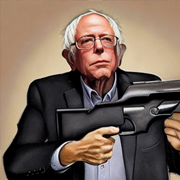










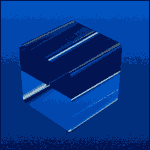





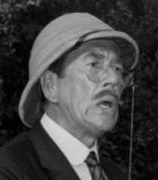



 Yes, it's like a lava lamp.
Yes, it's like a lava lamp.


